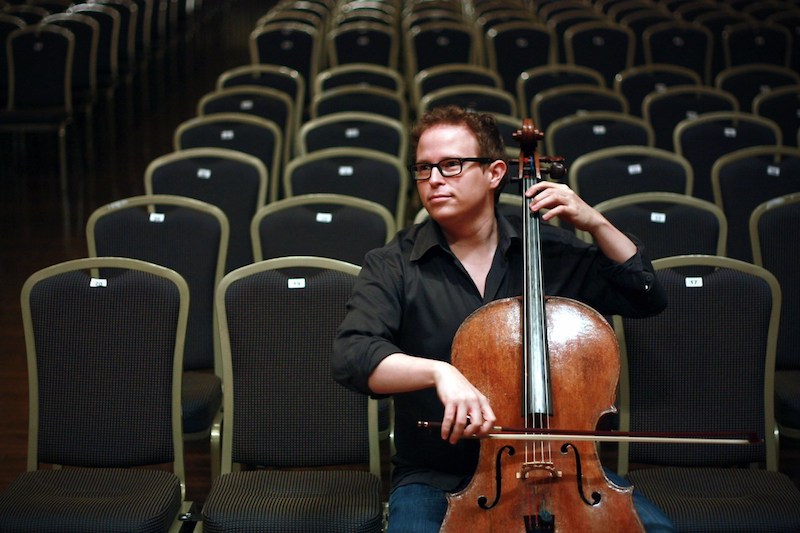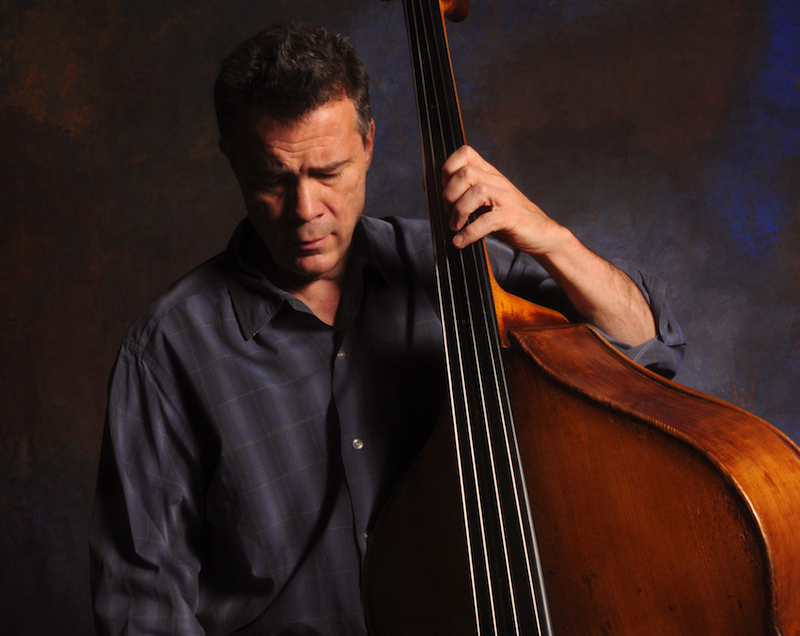The concert began with Dvořák, a composer who was clear with his desires in all his compositions. He placed extreme attention to detail and often riddled his works with dynamic, tempo and phrase markings.
 Timo-Veike Valve. Photograph © Jussi Sippola
Timo-Veike Valve. Photograph © Jussi Sippola
The Dvořák F minor Piano Trio, although often overshadowed by its more popular sibling The Dumky Trio was a work I highly anticipated. Sadly, its performance left an irreparably bitter aftertaste. There were moments of pure brilliancy in tone and musicality, however those moments were heavily masked by the lack of ensemble congruency, major tempo fluctuations and blatant mistakes present in the piano which was occasionally masked by a pedal overuse. Specifically, the tempo fluctuations were the greatest problems. In movements two and three there were many instances of it becoming dangerously too fast, saved only by the musicians’ individual prowess. The opening two bars before the piano entry with the melody in movement two, saw a burst of speed that did not entirely settle until the piano entered. The meno mosso (less movement) section in the same movement was much faster than the opening tempo. And in sections leading up to the climactic points in the deeply lyrical and mystical third movement, accelerando was not well controlled and the members fell apart in ensemble unity. With all this said, however, the fourth and arguably the most difficult technically, was executed with the least amount of technical errors. As the work came to a close, the three of them bowed and walked off with the cellist Timo-Veikko Valve patting the pianist Konstantin Shamray on the back.
After interval came Escaich’s Scenes of a Child at Dusk – five movements for a flute trio (flute, cello, piano). Its style of writing reflects the French aesthetics of its earlier masters Ravel and Debussy but embraces post-modern styles. Each movement, although unique to one another, had snippets where it foreshadowed the movement to come. It was a work that showcased all three musicians’ technical abilities but more so, Aura Go as a pianist of great subtleties. Go’s fine and fluid but powerful touch from the opening, combined with a conundrum of harmonics present in the cello and the flute’s flutter tonguing, contrasted brilliantly with the scherzo-like second movement, which paved the way for the climactic third – a profoundly lyrical and expressive movement, along with the fugal fifth all represented the tightness of the ensemble and their diverse musicality.
The Bach Sonata in G major BWV 1027 that followed, once again saw Tessa Lark remerge for a style her 1683 Stradivari was designed for. This piece was originally written for viola da gamba (similar to modern cello) and cembalo (harpsichord), had been rearranged by Edgar Meyer for the festival, for a string trio – violin, cello and double bass. All four movements were performed with an airiness and tonal balance that the cellist, Camden Shaw, did not possess for the Trout the night before. At times, perhaps due to the rearrangement, the phrasing felt short circuited as elongated melodies were passed between the bass instruments. Nevertheless Bach was a welcomed change from Escaich’s intensity which then transitioned well into the final work, and comfortably moved the concert closer to lunch.
 Edgar Meyer. Photograph © Jim McGuire
Edgar Meyer. Photograph © Jim McGuire
The concert concluded with movements one and four of Meyer’s Concert Duo for Violin and Double Bass. Meyer, who has been leading the festival concerts, showed off with his work his multifaceted capabilities as a musician. Both artists played from memory sharing great communication and ensemble work and his work functioned like an improvisation. Its melodies, which appeared to be heavily influenced by folk and country music, were passed back and forth between bass and violin. Hence, the instruments in an attempt to replicate such styles were performing with shorter bows and scratchier tones, which worked to great effects. The atmosphere of the hall lightened and influenced by the music, some audience members were bobbing lightly to the performance, bringing the concert to a jovial close.











Comments
Log in to join the conversation.